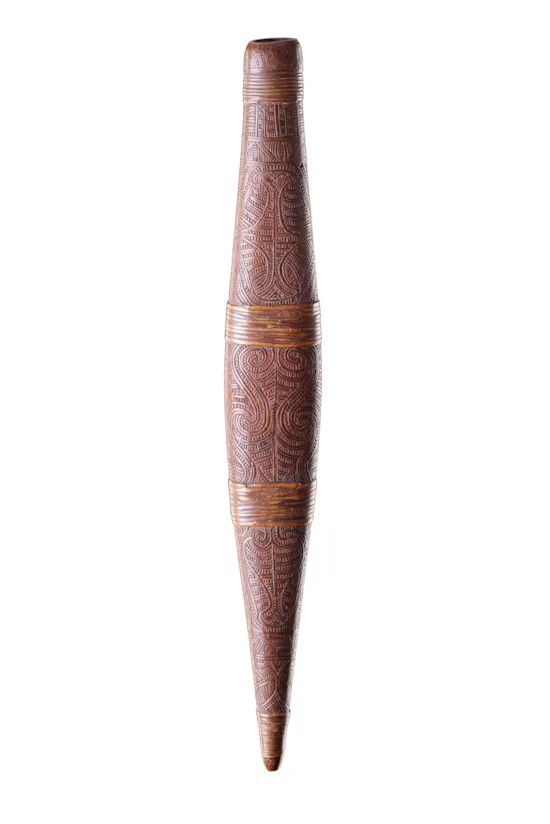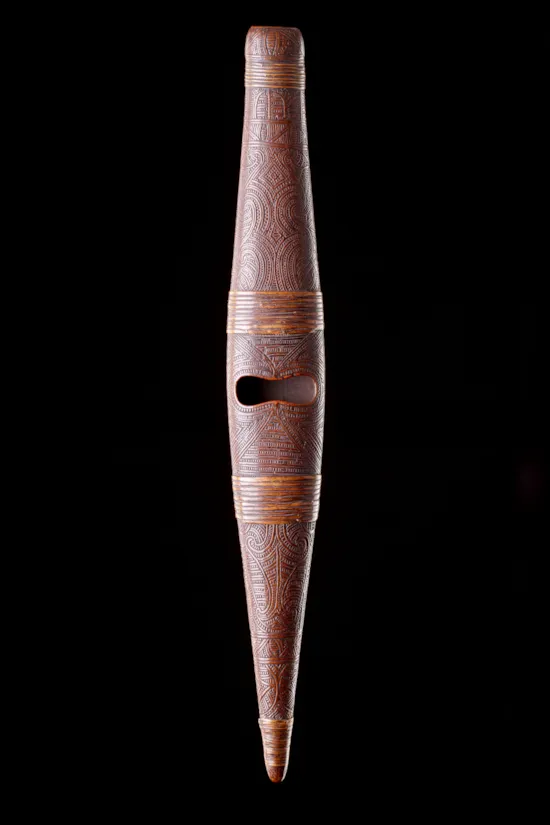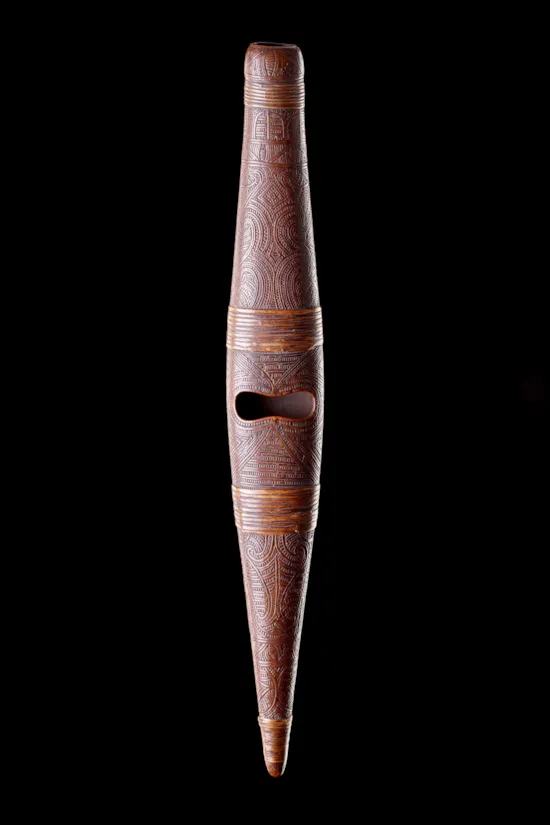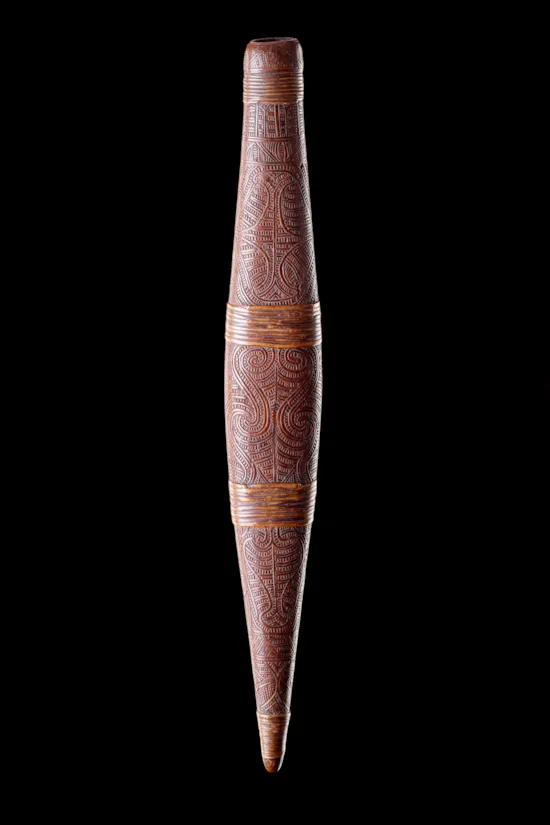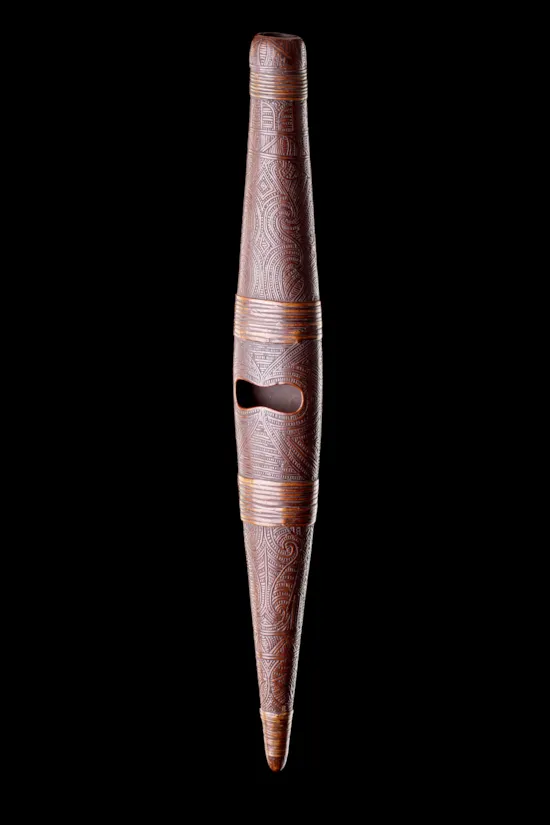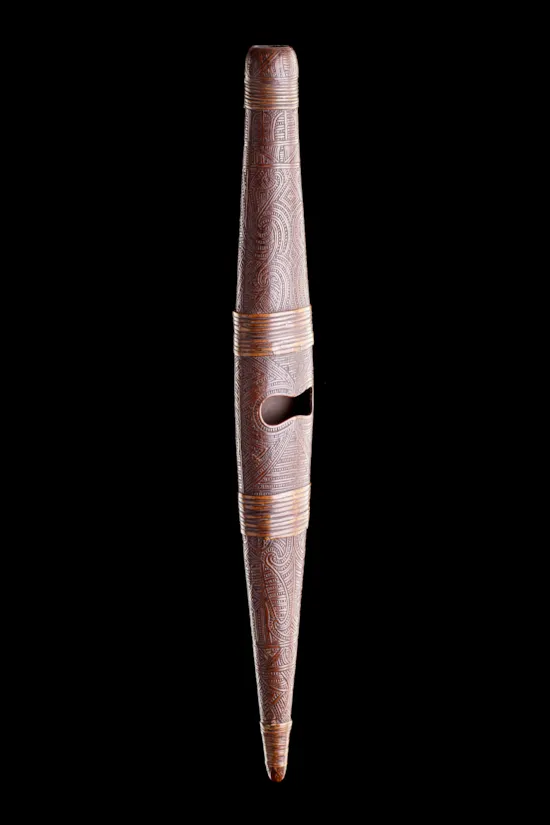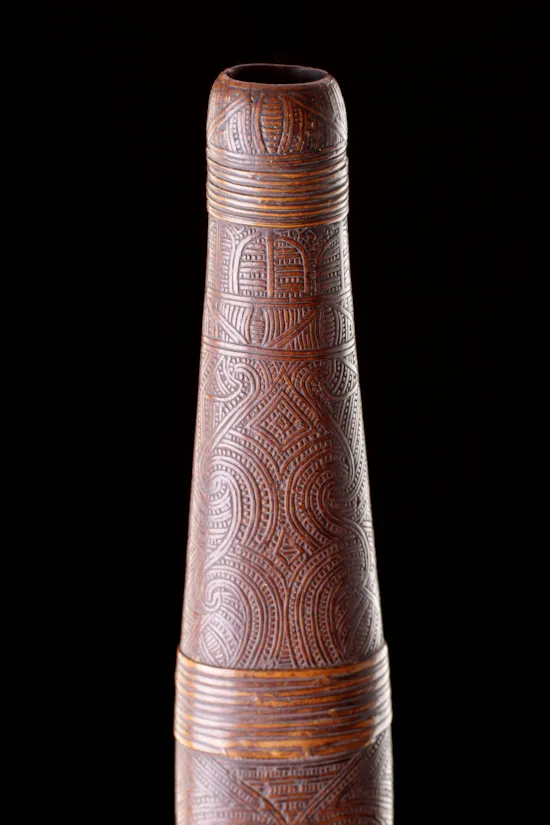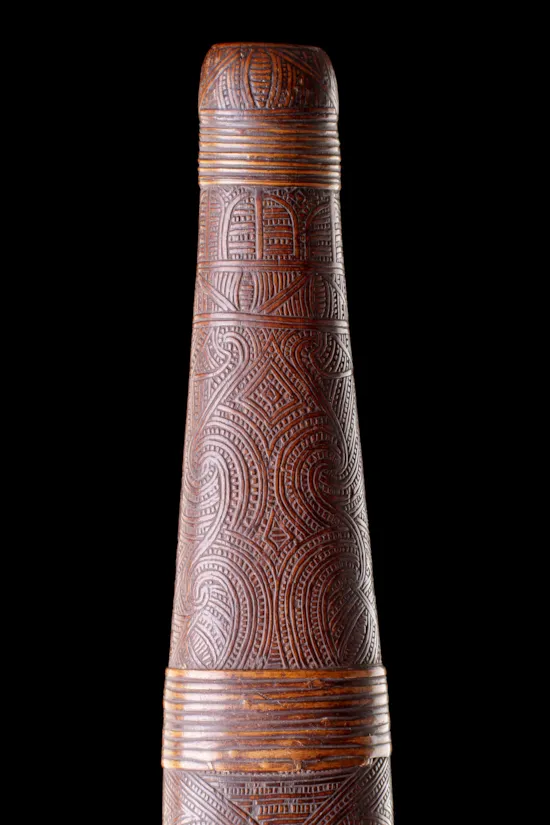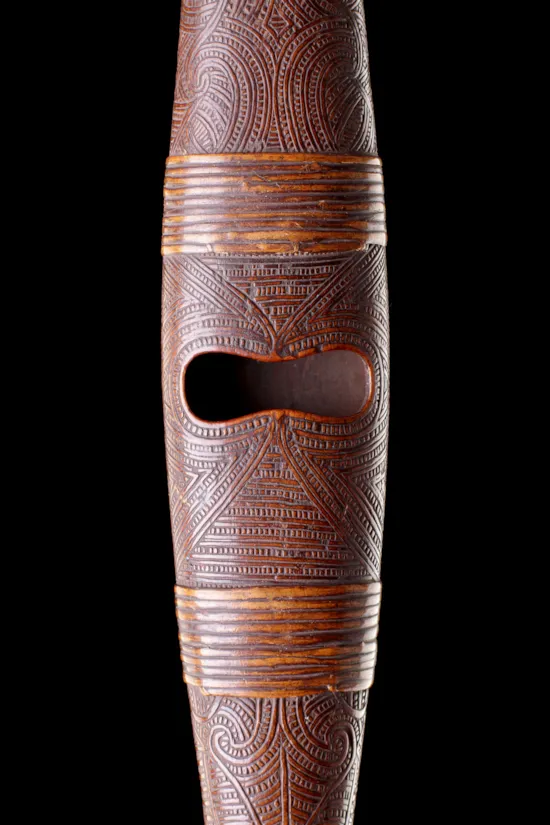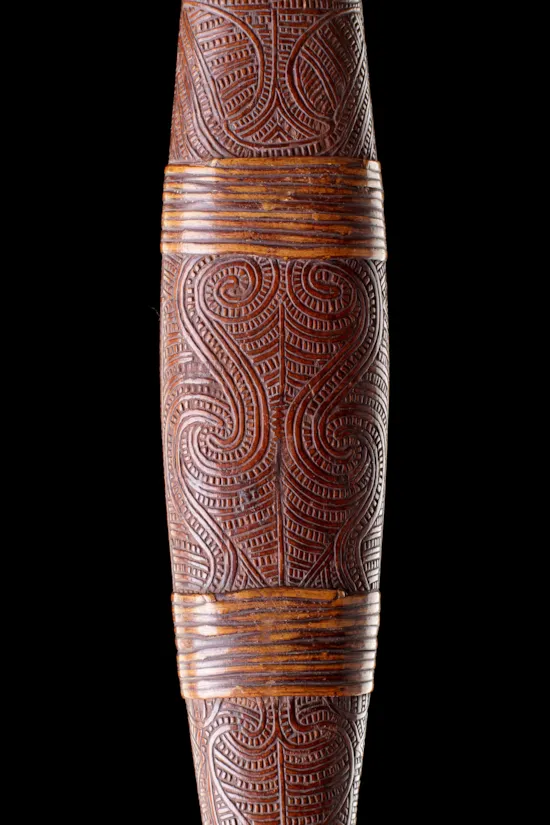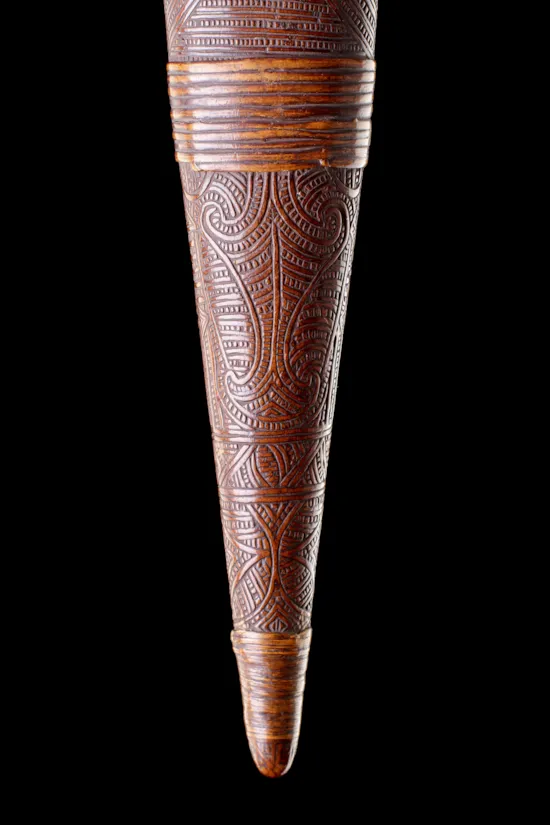An Exceptional New Zealand Māori Bugle-Flute ‘Pu Turino’
An Exceptional New Zealand Māori Bugle-Flute ‘Pu Turino’
With soft and shallow surface decoration profusely carved with a dynamic scrolling motif made of two sections bound together with original and complete ‘Kiekie’ vine roots at four points
The bow shaped mouth piece of anthropomorphic form with small rounded sounding hole to the end
Soft silky smooth medium brown patina
18th Century
Size: 33.5cm high, 4.5cm wide, 2.5cm deep - 13¼ ins high, 1¾ ins wide, 1 ins deep
With soft and shallow surface decoration profusely carved with a dynamic scrolling motif made of two sections bound together with original and complete ‘Kiekie’ vine roots at four points
The bow shaped mouth piece of anthropomorphic form with small rounded sounding hole to the end
Soft silky smooth medium brown patina
18th Century
Size: 33.5cm high, 4.5cm wide, 2.5cm deep - 13¼ ins high, 1¾ ins wide, 1 ins deep
An Exceptional New Zealand Māori Bugle-Flute ‘Pu Turino’
With soft and shallow surface decoration profusely carved with a dynamic scrolling motif made of two sections bound together with original and complete ‘Kiekie’ vine roots at four points
The bow shaped mouth piece of anthropomorphic form with small rounded sounding hole to the end
Soft silky smooth medium brown patina
18th Century
Size: 33.5cm high, 4.5cm wide, 2.5cm deep - 13¼ ins high, 1¾ ins wide, 1 ins deep
With soft and shallow surface decoration profusely carved with a dynamic scrolling motif made of two sections bound together with original and complete ‘Kiekie’ vine roots at four points
The bow shaped mouth piece of anthropomorphic form with small rounded sounding hole to the end
Soft silky smooth medium brown patina
18th Century
Size: 33.5cm high, 4.5cm wide, 2.5cm deep - 13¼ ins high, 1¾ ins wide, 1 ins deep
The bugle-flute is an instrument unique to the Māori which plays two notes, one for the male voice and one for the female voice, which are accentuated by the flautists technique. Used to announce the return of a chief to a village, for marking tapu periods and indicating a divine presence. Other musical effects could be produced to accompany both traditional singing and rituals observed by priests ‘Tohunga’. The Māori believe that the gods are responsible for the sources of musical inspiration and the fine crafting of their instruments expresses both respect and esteem for them. The shape of the ‘Pu Torino’ flute resembles the small cocoon of the native moth that embodies ‘Hine Raukatauri’ the deity of flutes whose voice is pure, high and attractive.
In the older early Māori carvings, although lavishly decorated with vigorous surface patterns, this is never allowed to dominate form, it was to enhance the sculpture. From the time of the arrival of Captain Cook the later collectors appreciated more elaborate, highly decorated carvings rather than the simpler more natural carvings such as this flute. The masterly precision of Māori spiral ornamentation was not surpassed anywhere in the Pacific and is one of their artists' special achievements.
In the older early Māori carvings, although lavishly decorated with vigorous surface patterns, this is never allowed to dominate form, it was to enhance the sculpture. From the time of the arrival of Captain Cook the later collectors appreciated more elaborate, highly decorated carvings rather than the simpler more natural carvings such as this flute. The masterly precision of Māori spiral ornamentation was not surpassed anywhere in the Pacific and is one of their artists' special achievements.
Collected by Robert Nutter Campbell 4th Regiment of Madras Native Infantry on his return from Singapore 1829
Thence by descent
Sold Sothebys, New York, May 17, 2002, lot 368
Ex Private English collection
cf: A flute of similar age in Trinity College Museum, Dublin said to have been brought back by Captain Cook on his 2nd or 3rd Voyage (18823656)
Thence by descent
Sold Sothebys, New York, May 17, 2002, lot 368
Ex Private English collection
cf: A flute of similar age in Trinity College Museum, Dublin said to have been brought back by Captain Cook on his 2nd or 3rd Voyage (18823656)
An Exceptional New Zealand Māori Bugle-Flute ‘Pu Turino’

SOLD
